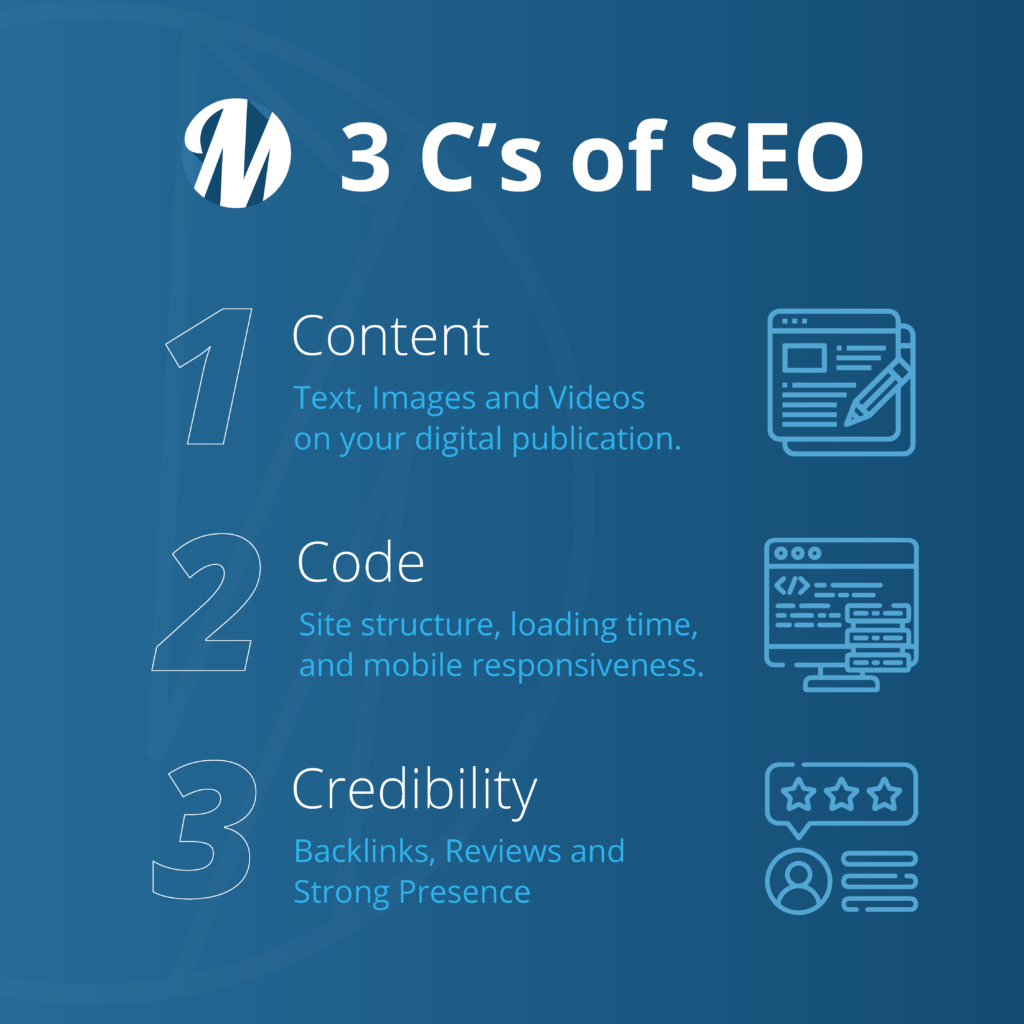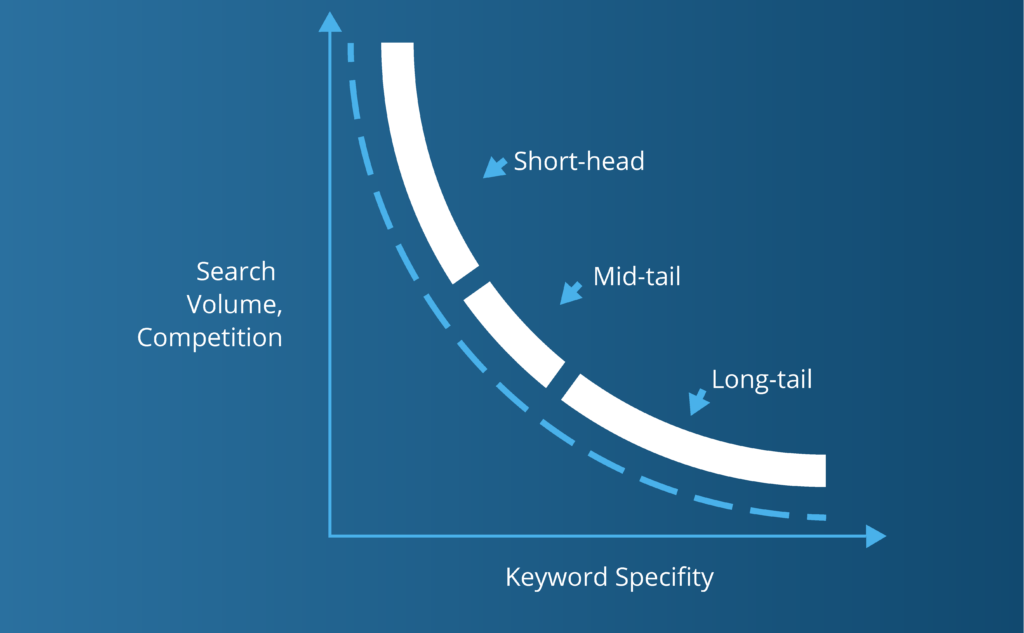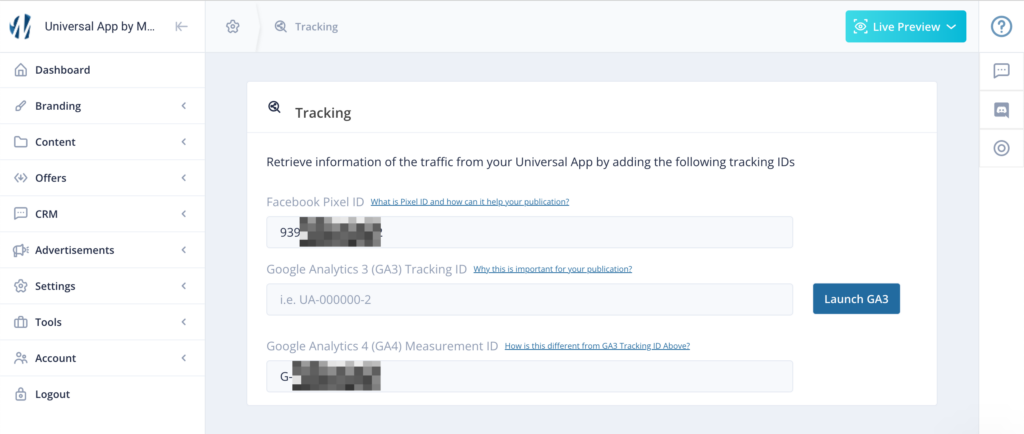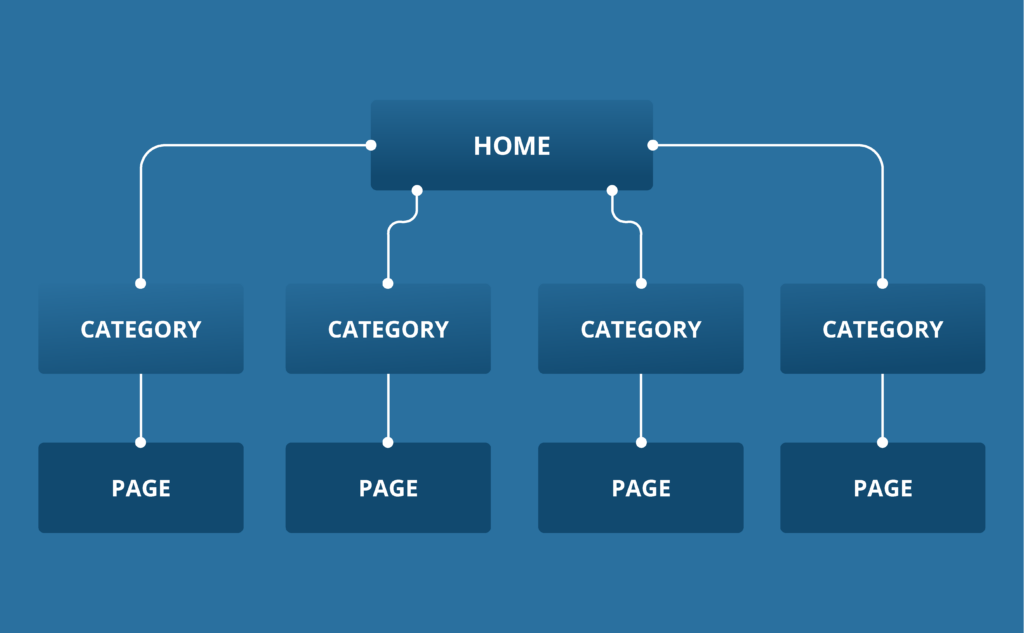From the founders of successful digital publishing platforms to the new-to-the-game marketers, everyone can benefit from an effective SEO content marketing strategy. Writing amazing blog posts or cultivating unique videos aren’t enough to reach readers and increase your user base.
To make sure your audience is engaged and that you maximize their acquisition potential, you need a smart plan in place–and this is where a content marketing strategy framework comes into play.
In today’s competitive market, it’s essential for digital publishers to develop an actionable step-by-step guide so they can generate significant target traffic with minimal investment. With that in mind, we have developed a comprehensive Content Marketing Strategy Framework specifically geared towards digital publishers who are looking to amplify their reach. Read on to see how our strategic approach can help you achieve real results!
What is SEO Content Marketing Strategy & How to Create One
An SEO content marketing strategy is a plan that combines SEO and content marketing techniques to improve the visibility of your business on search engines, attract more traffic, and generate more leads.
To create a successful strategy, you need to identify your target audience and relevant keywords, create high-quality content, promote it through various channels, track your results, and continually refine your approach based on data.
What is Search Engine Optimization (SEO)?
SEO is the art of optimizing your website content and structure to improve visibility and ranking on search engines such as Google, Bing or Yahoo.
SEO involves a series of techniques to increase the organic or unpaid traffic to your website.
It includes optimizing your website layout and design, improving website loading speed, creating relevant and high-quality content, and using specific keywords that align with your target audience’s search terms.
SEO is an essential aspect of digital marketing that can help you boost online reach and grow your business. With the right approach and a well-executed strategy, you can drive more traffic to your website and boost your conversion rates.
What is an SEO Strategy?
An SEO strategy is essentially a plan that outlines the steps and techniques a website owner or marketer will take to increase their website’s visibility and ranking in search engine results pages.
To put it simply, it’s a methodical approach or process to improve a website’s organic visibility for certain search engine queries. An effective SEO strategy involves researching and analyzing the target audience, identifying relevant keywords and optimizing website’s on-page and off-page content accordingly.
The ultimate goal of an SEO strategy is to rank higher in search engine results so that more traffic, leads, and sales can be generated. By creating an SEO strategy, one can achieve a better online presence and ultimately, drive more conversions for their business.
What are the 3 C’s of SEO?

When it comes to SEO, there are three key components that are often referred to as the 3 C’s. These are content, code, and credibility.
Content refers to the actual text, images, and videos on your website, and ensuring that it is high quality and relevant to your audience is crucial for SEO success.
Code refers to the technical aspects of your website, including its structure, load time, and mobile responsiveness.
Finally, credibility refers to the reputation of your website, both in terms of backlinks and reviews, and building a strong, authoritative presence is essential for ranking higher in search results.
By focusing on these three areas, you can improve your website’s SEO and drive more traffic to your pages.
What is an SEO Content Plan?
An SEO content plan, also known as SEO content marketing strategy, is the roadmap to driving organic traffic and improving website rankings. It involves creating relevant and consistent content that meets user intent and aligns with the search engine algorithm.
The process includes conducting a thorough keyword research, creating a content calendar, and publishing high-quality articles, blog posts, or videos that are optimized for both readers and search engines.
A well-executed SEO content strategy can help businesses increase their online visibility, expand their audience, and generate more leads and conversions.
By investing time and resources in developing an SEO content plan, businesses can stay ahead of the competition and create valuable and engaging content that resonates with their target audience.
Types of Content Marketing Strategy
Content marketing strategy is essential for any business that wants to connect with its target audience meaningfully.
There are various types of content marketing strategy that businesses can use to achieve their goals, such as blogging, social media, email marketing, videos, podcasts, webinars, and more.
Each strategy offers something unique, and businesses should choose the ones that align with their overall goals and marketing objectives.
For instance, if a business wants to drive traffic to its website, blogging and social media can be useful strategies. On the other hand, if a business wants to engage with its customers, videos, podcasts, and webinars can be effective. Ultimately, the key is to create content that provides value to the target audience and helps achieve the desired outcomes.
In addition to that, being able to share your content with the world is important.
Sharing content through social media is crucial for the success of any content marketing strategy as it allows businesses to reach a wider audience, engage with their target customers, tailor content to specific demographics, and measure the effectiveness of their strategies through analytics and insights.
Overall, social media provides a platform for businesses to connect with their audience, build brand awareness, and achieve their marketing objectives.
How SEO and Content Marketing work together?
As the digital world evolves, businesses are discovering that having a great website isn’t just about being visually appealing. SEO (Search Engine Optimization) has become a critical component in making sure potential customers can find your website. But SEO can’t do it all on its own – that’s where content marketing comes in.
Good content is king, as they say, and it’s vital for engaging potential customers and keeping them on your website.
By working together, SEO and content marketing can form a powerful duo that drives more traffic and creates a better user experience. So it’s essential to create quality content that contains the right keywords and is optimized for search engines.
When these two strategies are combined, they can help businesses reach their target audiences and stand out in a sea of competition.
How to develop an SEO Content Strategy to Increase Your Visibility on Search Engines?
Developing an effective SEO content strategy is the key to ranking high on search engines and driving traffic to your website.
To start, it’s important to conduct thorough keyword research to identify the phrases and words your target audience is searching for. Once your list of keywords is ready, you can begin creating quality content around them, carefully optimizing each page or post for search engines. But it’s not enough to simply churn out content; you need to ensure that it’s relevant, informative, and engaging in order to keep your visitors on the page and sharing your content.
Consistency is also crucial when it comes to publishing; a regular content schedule ensures that search engines continually crawl and index your site. With these tactics in place, you can develop a solid content strategy that will help your business stand out in a crowded online space.
1) Do your keyword research
When it comes to creating content, doing keyword research is crucial.
It allows you to understand what your audience is searching for and tailor your content to meet their needs. Not only that, but conducting effective research can also help you rank higher in search engines, driving more traffic to your website.
By using tools such as Google Keyword Planner or Ahrefs, you can easily identify popular keywords and phrases related to your topic. From there, you can create content that incorporates those keywords while still providing valuable information to your audience.
So, if you’re not already doing keyword research, it’s time to start!
2) Make a list of long-tail keywords based on these topics

Long-tail keywords are a critical component of any successful SEO strategy. They are highly specific search terms that are longer in length and are intended to target a particular niche audience.
If you’re trying to rank for more general keywords like “hotels” or “restaurants,” for example, you might be fighting a losing battle. That’s where long-tail keywords come in handy. They allow you to get highly targeted traffic that is more likely to convert.
Some examples of long-tail keywords based on the topic of Jasper might include “best hiking trails in Jasper,” “cheap hotels in Jasper,” “things to do in Jasper,” and “skiing in Jasper during winter.”
By incorporating these long-tail keywords into your content, you’ll be able to attract more visitors to your site and increase your chances of ranking higher in search engine results pages.
3) Use the right data to create stronger content marketing strategy

Connecting GA4 Measurement ID to MagLoft’s Universal App
Making a data-driven decision is very important. There is no excuse for creating a strategy that is not based on accurate data.
Understanding your audience and what they are searching for is the key to developing a successful content marketing plan.
By using the right data, you can gain insights into the topics that resonate most with your target market, the keywords they are using to search for information, and the platforms they prefer to engage with. With this information, you can create content that speaks directly to your audience, increasing your chances of attracting and retaining customers.
You can get your data by connecting your digital publications with Google Analytics 4 (GA4).
Google Analytics 4 is essential for digital publishers by providing them with a comprehensive view of user behavior and engagement, cross-device tracking capabilities to track user behavior across multiple devices, and predictive metrics to help publishers forecast future trends and optimize their content strategy.
Source: Google Support
These capabilities allow publishers to create personalized content and improve the user experience, leading to increased engagement, loyalty, and revenue.
So, take the time to gather and analyze the right data before developing your strategy, and you’ll be well on your way to creating compelling, effective content that resonates with your target market.
4) Create a realistic planning
Creating a realistic plan is crucial to achieving any goal. Setting ambitious targets without considering the resources necessary and the time frame can lead to disappointment and failure.
A realistic plan, on the other hand, takes into account any limitations and factors them in to create a step-by-step roadmap for success.
Working towards a goal with a realistic plan helps to build momentum and progress while maintaining motivation. It allows for adjustments to be made along the way to overcome any obstacles that may arise.
Remember, a well-planned journey is half the battle won.
5) Build pages for each topic
In order to create an efficient website, it’s essential to build pages for each topic. By doing so, you not only make it easier for your visitors to navigate through your site, but you also boost your search engine optimization.
Each page should be dedicated to a specific topic and have unique content. This not only adds value to your site, but it also helps search engines understand what your website is all about.
Additionally, by incorporating keywords within your content, you increase your chances of being found by potential visitors looking for your products or services.
So, take the time to create individual pages for each topic and ensure that each page is optimized for the best results.
6) Think about your site structure

When it comes to creating your own website, the structure can make or break the user experience. It’s important to think about how your pages will flow and how visitors will navigate through them. A clear and organized site structure can not only make your website easier to use, but it can also improve your search engine optimization (SEO).
By incorporating relevant keywords into your structure, search engines can better understand the purpose of your website and match it with the appropriate queries.
So take the time to plan out your site structure and ensure that it aligns with both user needs and SEO best practices.
7) Getting content backlinks and inbound links

SEO and content marketing strategy are critical for digital publishers looking to generate traffic.
Backlinks, otherwise known as inbound links, can play an integral part in helping the content be more visible; thus, driving more clicks to the website.
Optimizing content through proper keyword placement and boosting visibility through backlinks can help promote a content marketing strategy that will be beneficial for digital publishers in terms of their desired traffic goals.
Incorporating this tactic into a comprehensive content marketing framework is essential for any digital publisher to achieve success
8) Optimizing your site pages for page speed
As the saying goes, time is money. This is especially true when it comes to website pages.
In today’s fast-paced world, users expect websites to load quickly and efficiently. Slow-loading pages can not only be frustrating, but they can also lead to decreased traffic and conversion rates.
This is why optimizing your site pages for page speed is crucial to the success of your website.
By implementing best practices such as compressing images, minimizing HTTP requests, and reducing server response time, you can ensure that your website loads quickly and provides a seamless user experience.
In this way, you demonstrate that you respect your visitors’ time and value their browsing experience.
You can easily evaluate your digital publication’s page performance by entering your website’s link into GTMetrix, which will then analyze the site and provide recommendations on how to enhance its overall page performance.
9) Stay up-to-date on SEO news and best practices
Staying up-to-date on SEO news and best practices is crucial if you want to improve your website’s visibility and reach a wider audience. In today’s fast-paced digital world, search engines are constantly changing their algorithms, making it vital to keep up with the latest SEO trends and updates.
By regularly reading SEO news and following best practices, you can optimize your website for search engines, drive more traffic to your pages, and ultimately, increase your online visibility.
Whether you’re an experienced SEO professional or just starting, the key to success is staying informed and adapting your strategies accordingly.
So, start learning today and stay ahead of the ever-changing SEO game!
10) Look out for changing keywords and new search intent
The world of search engine optimization (SEO) is constantly changing, and one of the key areas to watch out for is changing keywords and new search intent.
While it’s important to have a strong understanding of keywords that are currently performing well for your business, it’s equally important to identify when those keywords aren’t as effective and new ones need to be introduced.
Additionally, search intent – the reason behind why someone is searching for a particular term – is becoming increasingly important for SEO success.
Staying on top of these changes and adapting your strategy accordingly will help you stay ahead of the competition and ensure your website continues to rank well in search engine results pages.
The value of combining your SEO and content strategies
Effective SEO and content strategies can work together to propel your website to the top of search engine rankings.
By using keywords and phrases strategically throughout your content, you can improve your online visibility and attract more traffic to your site. But, in order to truly maximize the benefits of SEO and content marketing, they need to be combined into a comprehensive strategy.
By conducting thorough keyword research, creating high-quality content, and consistently analyzing your website’s performance, you can ensure that your marketing efforts are aligned towards achieving your goals.
Ultimately, the key to success in online marketing is to stay up-to-date with the latest trends and best practices, and to be willing to adapt your strategy as needed. By combining SEO and content marketing, you can stay ahead of the competition and position your business for long-term success.
What can you do next?
In conclusion, leveraging SEO and content strategies together is an effective way to increase the visibility of your website.
Utilise research for short and long-tailled keywords, create engaging content with valuable data points, come up with a realistic plan for execution, build pages around relevant topics, transparently evaluate your site structure, and monitor SEO best practices to maximize the impact of your digital publishing efforts.
Furthermore, it’s essential to understand that SEO and content work hand in hand to be successful in today’s digital landscape; as such resources should be allocated accordingly.
For those looking for professional help in taking their digital publishing game further, MagLoft can help! Book a call with MagLoft today and take advantage of our expertise in this field!
